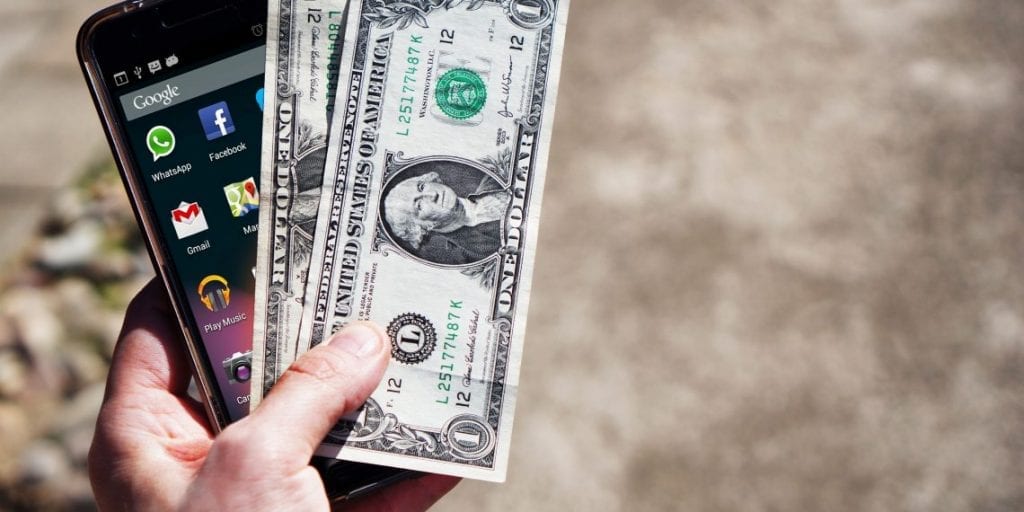New Decade, New Ways to Pay: Will the 2020s Bring a Cashless Society?

With the rising number of cashless payment options available, such as digital wallets, wearables, and mobile pay apps for every kind of purchase, it may seem that the United States is well on its way to becoming a cashless society.
This is somewhat true, in that cashless transactions are rising in popularity each year. According to Square, fewer and fewer Americans are using cash—even for their smallest purchases. While 46% of purchases under $20 were paid in cash in 2015, just 37% were paid in cash in 2019.
On top of that, the Federal Reserve has reported that over 80% of transactions are through cashless options like credit and debit cards, digital wallets, and wearables, among other payment methods. This makes sense, as cashless payment types are simple to use and often more convenient than having to withdraw cash from an account.
But will the United States go as far as becoming a completely cashless society? Probably not anytime soon— and here’s why.
A cashless society would be exclusionary
While most Americans do have cashless options like credit and debit cards, this simply isn’t the case for everyone. In 2018, the Federal Reserve estimated that there were 55 million unbanked or underbanked Americans, accounting for 22% of households.
A cashless society would mean that the millions of underbanked and unbanked U.S. residents would struggle to find ways to pay for even the most basic goods and services. In that way, a cashless society would be inherently classist.
Furthermore, the hardships of a cashless society would disproportionately impact people and communities of color. A 2017 Federal Deposit Insurance Corporation found that 16.9% of black households and 14% of Hispanic households were unbanked in 2017, compared to just 3% of white households.
Pushback against the trend towards a cashless society
Some cities and states have taken active steps to be inclusive of those without access to other payment options. For example, Philadelphia became the first city in the nation to pass a law banning cashless stores and restaurants in February 2019.
Others have since followed suit, with New Jersey and San Francisco passing similar measures prohibiting cashless businesses in March and May, respectively. New York City is set to vote on its own bill in the upcoming year.
Additionally, companies like Amazon have made efforts to accommodate cash-using customers. Amazon Paycode, which was launched in the U.S. in September, allows customers to purchase items on Amazon online then pay in cash at Western Union.
Cashless has its perks, too— new ways it’s expanding
The rise in popularity of cashless payment methods are indicative, however, of the perks that they bring. Many consumers don’t carry cash anymore, and paying with a card, through an app, or with a wearable enhances the customer experience by maximizing convenience. Therefore, even if a cashless society isn’t quite on the horizon, people can still expect an increase in the cashless payment types available.
The Salvation Army’s decision to accept mobile donations is a great example of a recently adopted cashless solution that benefits consumers by making donating more convenient. The 2019 holiday season was the first that individuals could use their phones to donate to the Salvation Army’s annual red kettle campaign. To do so, consumers simply scan a QR code with a smartphone at the site of the red kettle, then submit a donation using Apple or Google Pay.
Another relatively new cashless initiative is Amazon Go brick-and-mortar convenience stores, which use cutting-edge technology and cameras to offer customers a seamless shopping experience. Customers can simply walk in to an Amazon Go store, pick out the items they want to purchase, and leave. As they exit, the purchase is automatically charged to their Amazon Go account.
The first Amazon Go store opened for business in January 2018, and there are now 20 established and announced locations in Seattle, Chicago, San Francisco, and New York City. To accommodate the cashless business ban within the city, Amazon Go locations in San Francisco also accept cash through an attendant who checks out customers without the app.
Expect more cashless options, but don’t say goodbye to cash
Though it is highly unlikely that the United States will become a fully cashless society anytime soon, people can still expect cashless options to expand as new payment technologies and solutions are created. This will allow the trend toward cashless to continue, while ensuring that those without alternative payments methods are not forced to jump through hoops to make purchases.
